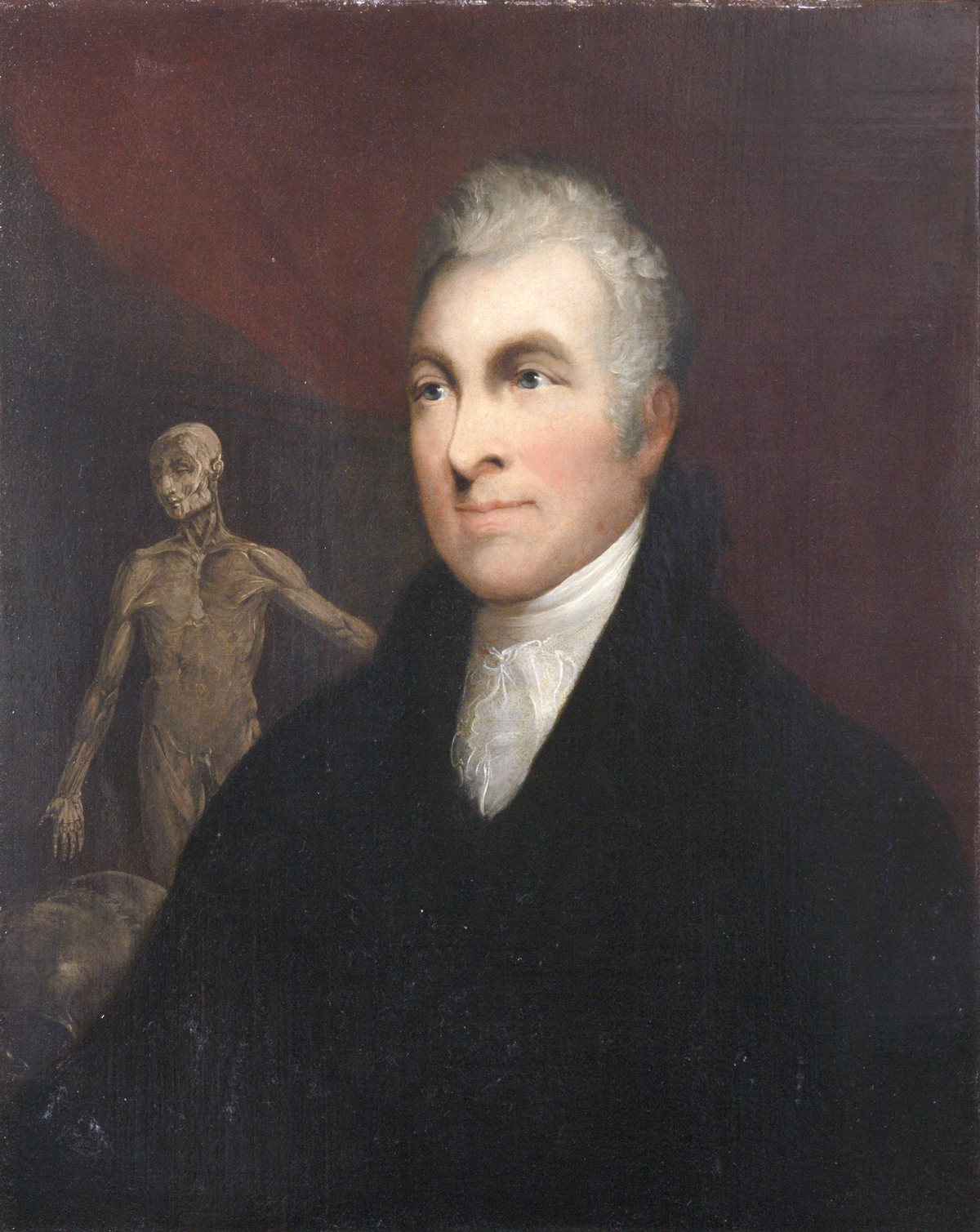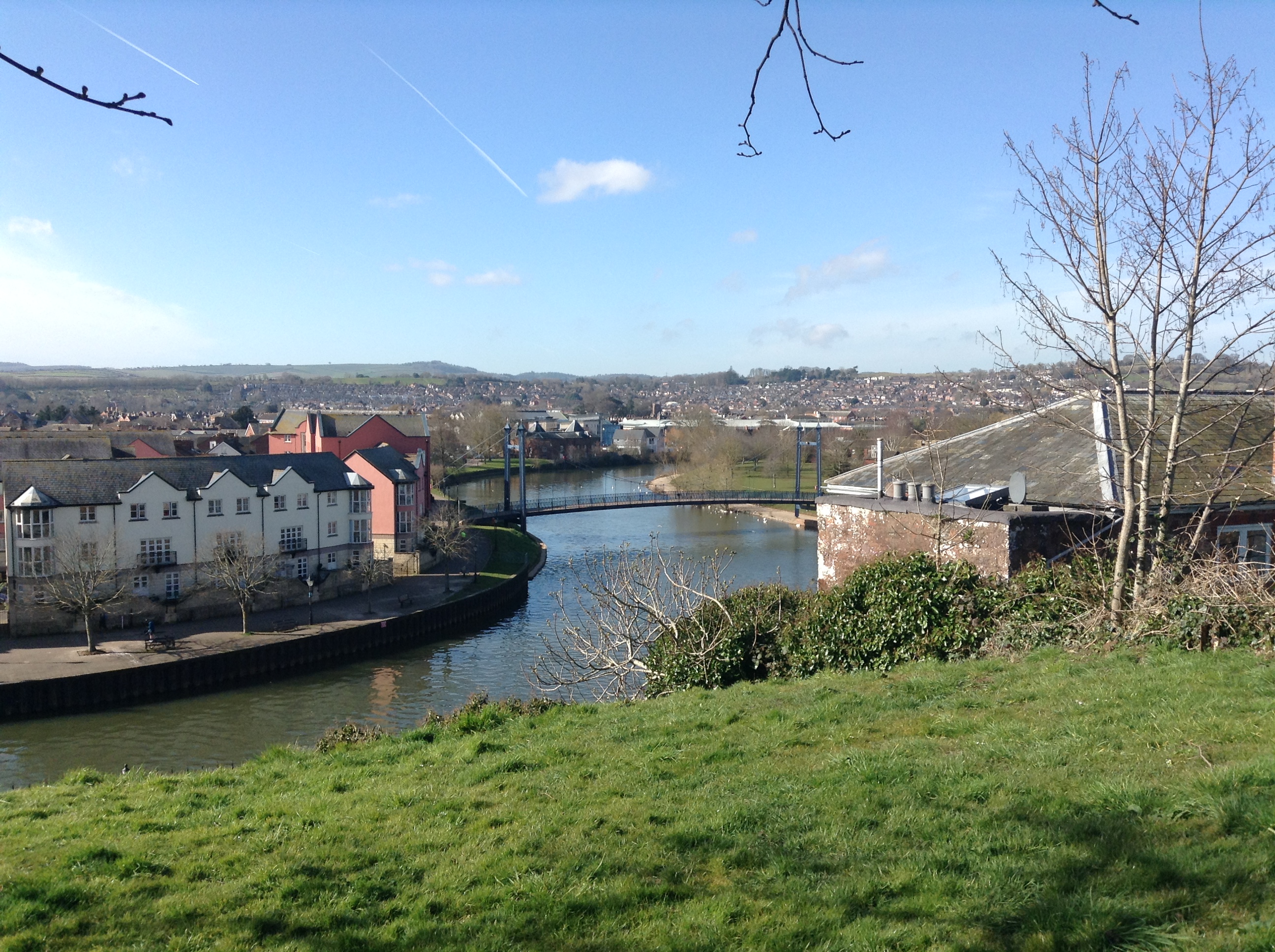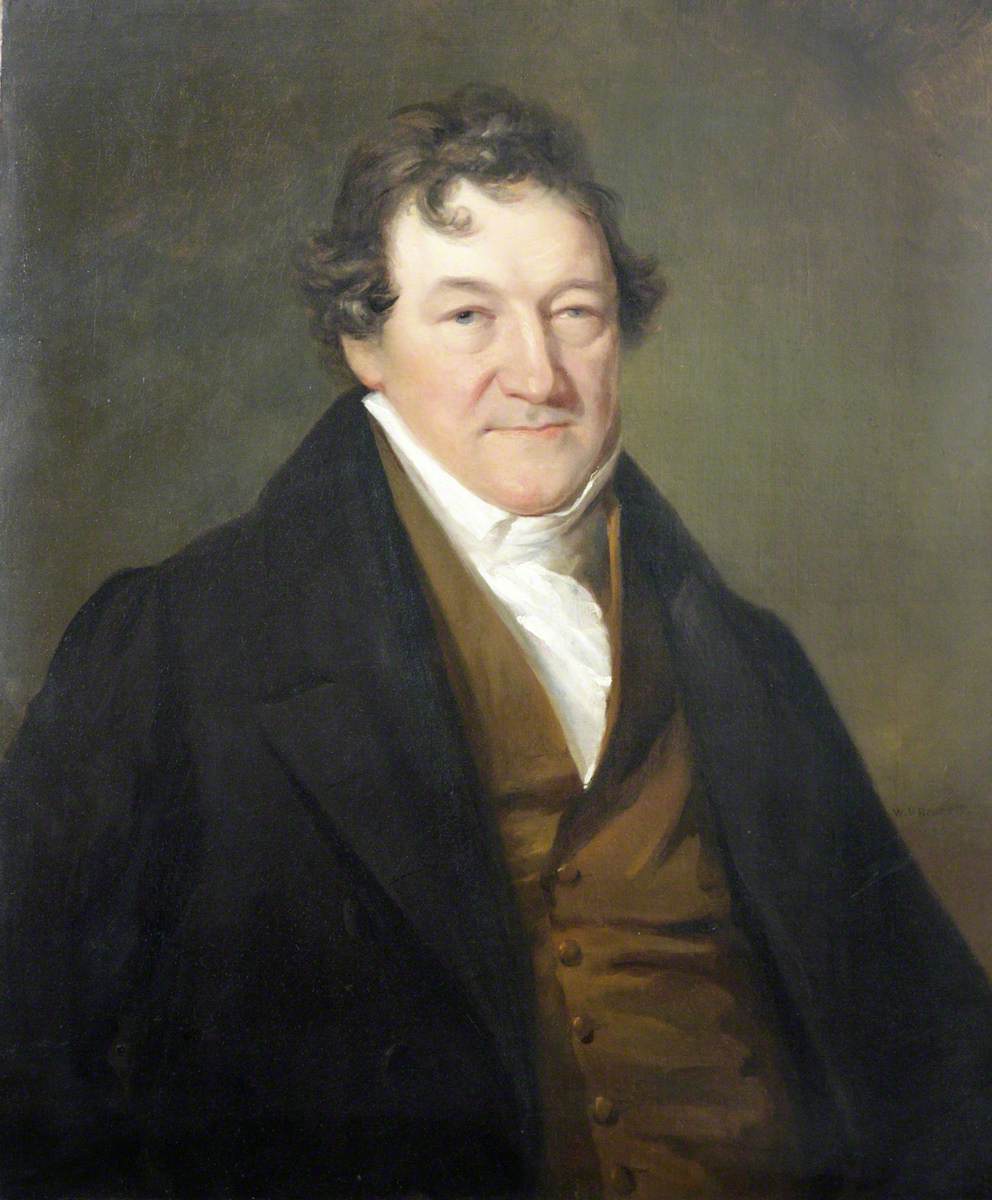|
John Sheldon (anatomist)
John Sheldon (6 July 1752 – 8 October 1808) was an English surgeon and anatomist. Career Sheldon was born in London on 6 July 1752, and was apprenticed to Henry Watson, elected in 1766 the first professor of anatomy of the Surgeons' Company. Sheldon studied and taught anatomy at Watson's private museum in Tottenham Court Road, which was later wrecked by a mob. He received his diploma at the Surgeons' Company on 2 November 1775, and then lectured on anatomy at Great Windmill Street school under William Hunter. Sheldon was surgeon to the General Medical Asylum in Welbeck Street, and on 18 July 1782 he was appointed professor of anatomy to the Royal Academy in succession to Hunter. He was elected a Fellow of the Royal Society on 29 April 1784, and on 20 April 1786 he became surgeon to Westminster Hospital, a post he resigned two years later. Teacher In 1777 Sheldon opened a private theatre in Great Queen Street, where he taught anatomy, and pursued research. After the deaths ... [...More Info...] [...Related Items...] OR: [Wikipedia] [Google] [Baidu] |
John Sheldon Keenan
John is a common English name and surname: * John (given name) * John (surname) John may also refer to: New Testament Works * Gospel of John, a title often shortened to John * First Epistle of John, often shortened to 1 John * Second Epistle of John, often shortened to 2 John * Third Epistle of John, often shortened to 3 John People * John the Baptist (died c. AD 30), regarded as a prophet and the forerunner of Jesus Christ * John the Apostle (lived c. AD 30), one of the twelve apostles of Jesus * John the Evangelist, assigned author of the Fourth Gospel, once identified with the Apostle * John of Patmos, also known as John the Divine or John the Revelator, the author of the Book of Revelation, once identified with the Apostle * John the Presbyter, a figure either identified with or distinguished from the Apostle, the Evangelist and John of Patmos Other people with the given name Religious figures * John, father of Andrew the Apostle and Saint Peter * Pope John ... [...More Info...] [...Related Items...] OR: [Wikipedia] [Google] [Baidu] |
Exeter
Exeter () is a city in Devon, South West England. It is situated on the River Exe, approximately northeast of Plymouth and southwest of Bristol. In Roman Britain, Exeter was established as the base of Legio II Augusta under the personal command of Vespasian. Exeter became a religious centre in the Middle Ages. Exeter Cathedral, founded in the mid 11th century, became Anglican in the 16th-century English Reformation. Exeter became an affluent centre for the wool trade, although by the First World War the city was in decline. After the Second World War, much of the city centre was rebuilt and is now a centre for education, business and tourism in Devon and Cornwall. It is home to two of the constituent campuses of the University of Exeter: Streatham and St Luke's. The administrative area of Exeter has the status of a non-metropolitan district under the administration of the County Council. It is the county town of Devon and home to the headquarters of Devon County Council. A p ... [...More Info...] [...Related Items...] OR: [Wikipedia] [Google] [Baidu] |
Paul Sandby
Paul Sandby (1731 – 7 November 1809) was an English map-maker turned landscape painter in watercolours, who, along with his older brother Thomas, became one of the founding members of the Royal Academy in 1768. Life and work Sandby was born in Nottingham, and baptised there in 1731, although his date of birth has traditionally been given as 1725. In 1745 he moved to London where he followed his brother Thomas in obtaining an appointment in the military drawing department at the Tower of London. Following the suppression of the Jacobite rebellion of 1745, Sandby was employed to assist in the military survey of the new road to Fort George, and of the northern and western parts of the Highlands, under the direction of Colonel David Watson. He was later appointed draughtsman to the survey. While undertaking this commission, which included preparing designs for new bridges and fortifications, he began producing watercolour landscapes documenting the changes in Scotland sinc ... [...More Info...] [...Related Items...] OR: [Wikipedia] [Google] [Baidu] |
Portland Place
Portland Place is a street in the Marylebone district of central London. Named after the Third Duke of Portland, the unusually wide street is home to BBC Broadcasting House, the Chinese and Polish embassies, the Royal Institute of British Architects and numerous residential mansion blocks. History and topography The street was laid out by the brothers Robert and James Adam for the Duke of Portland in the 1770s and originally ran north from the gardens of a detached mansion called Foley House. It was said that the exceptional width of the street was conditioned by the Duke's obligation to his tenant, Lord Foley, that his views to the north would not be obscured. In the early 19th century, Portland Place was incorporated into the royal route from Carlton House to Regent's Park via Langham Place, developed for the Prince Regent by John Nash. The street is unusually wide for central London (33 metres / 110 feet). The ambitious plans included a third circus to complement Pic ... [...More Info...] [...Related Items...] OR: [Wikipedia] [Google] [Baidu] |
Montgolfier Balloon
A hot air balloon is a lighter-than-air aircraft consisting of a bag, called an envelope, which contains heated air. Suspended beneath is a gondola or wicker basket (in some long-distance or high-altitude balloons, a capsule), which carries passengers and a source of heat, in most cases an open flame caused by burning liquid propane. The heated air inside the envelope makes it buoyant, since it has a lower density than the colder air outside the envelope. As with all aircraft, hot air balloons cannot fly beyond the atmosphere. The envelope does not have to be sealed at the bottom, since the air inside the envelope is at about the same pressure as the surrounding air. In modern sport balloons the envelope is generally made from nylon fabric, and the inlet of the balloon (closest to the burner flame) is made from a fire-resistant material such as Nomex. Modern balloons have been made in many shapes, such as rocket ships and the shapes of various commercial products, though the ... [...More Info...] [...Related Items...] OR: [Wikipedia] [Google] [Baidu] |
Vincent Lunardi
Vincenzo Lunardi (11 January 1754 in Lucca – 1 August 1806 in Lisbon) was a pioneering Italian aeronaut, born in Lucca. Ascents in England Vincenzo Lunardi's family were of minor Tuscan nobility from Lucca, and his father had married late in life. Vincenzo was one of three children. He travelled in France in his early years before being called home, where he was put into the diplomatic service. Vincenzo Lunardi came to England as Secretary to Prince Caramanico, the Neapolitan Ambassador. 15 September 1784 There was a flying craze in France and Scotland with James Tytler, Scotland's first aeronaut and the first Briton to fly, but even so and after a year since the invention of the balloon, the English were still skeptical, and so George Biggin and 'Vincent' Lunardi, "The Daredevil Aeronaut", together decided to demonstrate a hydrogen balloon flight at the Artillery Ground of the Honourable Artillery Company in London on 15 September 1784. However, because the 200,000-stro ... [...More Info...] [...Related Items...] OR: [Wikipedia] [Google] [Baidu] |
James Tytler
James Tytler (17 December 1745 – 11 January 1804) was a Scottish apothecary and the editor of the second edition of ''Encyclopædia Britannica''. Tytler became the first person in Britain to fly by ascending in a hot air balloon (1784). A group of historiographers wrote about him: Life Tytler was born in Fern, Forfarshire, Scotland, the son of a Presbyterian minister. His father taught him Greek, Latin and theology. He probably studied for the ministry but was not interested in (Orthodox) Calvinism. He became a preacher in the Church of Scotland and studied medicine at the University of Edinburgh, after which he was apprenticed to a ship's surgeon for one year. He may not have been awarded a degree, although the 11th edition of Britannica refers to him as James Tytler, M.A. He declined to practice medicine but instead opened a pharmacy in Leith, near Edinburgh, which was a financial failure, leaving him in debt. The two longest articles in the second edition of ''Britannic ... [...More Info...] [...Related Items...] OR: [Wikipedia] [Google] [Baidu] |
Barthélemy Faujas De Saint-Fond
Barthélemy Faujas de Saint-Fond (17 May 174118 July 1819) was a French geologist, volcanologist and traveller. Life He was born at Montélimar. He was educated at the Jesuit's College at Lyon and afterwards at Grenoble where he studied law and was admitted as an advocate to the parlement. He rose to be president of the seneschal's court in Montélimar (1765), where he acquitted himself with distinction. However, he became disenchanted with law and wished to pursue his love of nature that had begun earlier in his life. His favourite pastime was visiting the mountain regions in the Alps and Massif Central. There he began to study the forms, structure, composition and superposition of rocks. In 1775 in the Velay he discovered a rich deposit of pozzuolana, that was eventually mined by the government. In 1776 he established a relationship with Buffon, who recognised the value of his scientific efforts immediately. Invited by Buffon to Paris, Faujas ceased his legal work and was a ... [...More Info...] [...Related Items...] OR: [Wikipedia] [Google] [Baidu] |
Archibald Geikie
Sir Archibald Geikie (28 December 183510 November 1924) was a Scottish geologist and writer. Early life Geikie was born in Edinburgh in 1835, the eldest son of Isabella Thom and her husband James Stuart Geikie, a musician and music critic. The elder brother of James Geikie, he was educated at Edinburgh High School and University of Edinburgh. Career In 1855 was appointed an assistant on the British Geological Survey. Wielding the pen with no less facility than the hammer, he inaugurated his long list of works with ''The Story of a Boulder; or, Gleanings from the Note-Book of a Geologist'' (1858). His ability at once attracted the notice of his chief, Sir Roderick Murchison, with whom he formed a lifelong friendship, and whose biographer he subsequently became. With Murchison some of his earliest work was done on the complicated regions of the schists of the Scottish Highlands; and the small geological map of Scotland published in 1862 was their joint work: a larger map was ... [...More Info...] [...Related Items...] OR: [Wikipedia] [Google] [Baidu] |
Sheldon Montgolfier Balloon
Sheldon may refer to: * Sheldon (name), a given name and a surname, and a list of people with the name Places Australia *Sheldon, Queensland *Sheldon Forest, New South Wales United Kingdom *Sheldon, Derbyshire, England *Sheldon, Devon, England *Sheldon, West Midlands, England * Sheldon Stone Circle, Aberdeenshire, Scotland *Sheldon Manor, Chippenham, Wiltshire United States * Sheldon, Illinois * Sheldon, Iowa * Sheldon, Minnesota * Sheldon, Missouri * Sheldon, New York * Sheldon, North Dakota * Sheldon, South Carolina * Sheldon, Texas * Sheldon, Vermont * Sheldon, Monroe County, Wisconsin * Sheldon, Rusk County, Wisconsin Other uses * Sheldon coin grading scale * Sheldon School, Chippenham, Wiltshire, England * Sheldon High School, several schools * The Sheldon, concert hall and art galleries in St. Louis, Missouri * ''Sheldon'' (webcomic), created by Dave Kellett * '' Young Sheldon'', created by Chuck Lorre and Steven Molaro * Sheldon, a character from the video gam ... [...More Info...] [...Related Items...] OR: [Wikipedia] [Google] [Baidu] |
River Exe
The River Exe ( ) in England rises at Exe Head, near the village of Simonsbath, on Exmoor in Somerset, from the Bristol Channel coast, but flows more or less directly due south, so that most of its length lies in Devon. It flows for 60 miles (96 km) and reaches the sea at a substantial ria, the Exe Estuary, on the south (English Channel) coast of Devon. Historically, its lowest bridging point was the Old Exe Bridge in Exeter, the largest settlement on the river, but there is now a viaduct for the M5 motorway about south of the city centre. Topography The river's name derives from *Uɨsk, a Common Brittonic root meaning "abounding in fish", and a cognate of both the Irish ''iasc'', meaning "fish", and ''pysg'', the plural word for "fish" in Welsh. The same root separately developed into the English Axe and Esk, the Welsh Usk, though not, as some have claimed, the word ''whisky'', this latter being from the Classical Irish/Gaelic "water" (the fuller phrase being ; ... [...More Info...] [...Related Items...] OR: [Wikipedia] [Google] [Baidu] |
Bartholomew Parr
Bartholomew Parr FRS FRSE (1750–1810) was an 18th-century British physician and medical author, known for his ''London Medical Dictionary'' published in 1809. After earning his Doctor of Medicine in 1773 at the University of Edinburgh, Parr served as Physician of the Devon and Exeter Hospital in southwest England. He was later elected as Fellow of the Royal Societies of Edinburgh and London. Life Parr was born in Exeter in Devon in 1750 the son of Bartholomew Parr (1713-1800), surgeon of Exeter Hospital (and a pupil of Dr. William Smellie), by his second wife Johanna Burgess. He was sent to the University of Edinburgh to study medicine and graduated with a Doctor of Medicine in 1773, returning to Exeter to practice. In February 1775 he replaced Dr. Thomas Glass as Physician of the Devon and Exeter Hospital. In 1789 he was elected a Fellow of the Royal Society of Edinburgh. His proposers were Alexander Hamilton, James Hutton and Andrew Duncan, the elder. In 1797 he was also ... [...More Info...] [...Related Items...] OR: [Wikipedia] [Google] [Baidu] |









